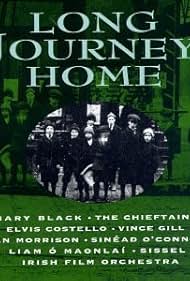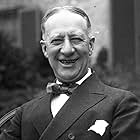The Irish in America: Long Journey Home
- Mini serie TV
- 1998–
VALUTAZIONE IMDb
6,7/10
58
LA TUA VALUTAZIONE
Aggiungi una trama nella tua linguaA survey of the ethnic history of the Irish population in the the United States of America.A survey of the ethnic history of the Irish population in the the United States of America.A survey of the ethnic history of the Irish population in the the United States of America.
- Premi
- 1 vittoria e 2 candidature
Sfoglia gli episodi
Foto
Trama
Recensione in evidenza
The Irish still talk about their famine-ships, but Part 1 of this quartet is pointedly titled 'The Great Hunger', with no mention of famine - the official new take on the human tragedy of 1840's Ireland, apparently caused by the stone-hearted Anglo-Irish and not by the potato pest itself.
That is one example of new light on the Irish in America, which helps to explain their extreme clannishness, and the secret freemasonries that they felt necessary for survival. This culminated in the vote-rigging and fraud scandals of Tammany Hall, when the longsuffering ratepayers of New York City were subsidising 'jobs for the boys' instead of much-needed public services.
America's growth depended heavily on sheer brawn - draining marshes, levelling mountains, tunnelling for canals and railroads - and no Irishman needed to be unemployed for long. But in the old South, employers treated the Irish as lower than the slaves, as the slaves represented long-term investment that needed safeguarding, while the Irish were felt to be expendable. Meanwhile it was in the copper-mines of Butte, Montana that the Irish had their first experience of actually working for an Irish employer instead of just another WASP.
At 5½ hours in all, you'll learn plenty more about the American-Irish experience, from the power of the church (and the distinctly muscular priests needed to uphold this power) to the pessimistic streak in Eugene O'Neill, and even a wry questioning of why the fatalistic Murphy's Law is so-called. The treatment is admirably even-handed, with an especially good choice of commentators, many descended from the wretches who once boarded those ships.
But the overall scheme cannot be called elegant. It tries to be chronological, but is too often sidetracked into the developing of themes. Two popular heroes, bare-knuckle champion John L. Sullivan and presidential candidate Alfred E. Smith, are profiled at quite excessive length, as though the producers had been planning a series based around prominent figures alone. And the regular backing music of pipe-and-fiddle is disappointingly clichéd. Finally the titling of the four episodes is seriously uncreative, with no clue as to what is meant by the overall title 'Long Journey Home'.
That is one example of new light on the Irish in America, which helps to explain their extreme clannishness, and the secret freemasonries that they felt necessary for survival. This culminated in the vote-rigging and fraud scandals of Tammany Hall, when the longsuffering ratepayers of New York City were subsidising 'jobs for the boys' instead of much-needed public services.
America's growth depended heavily on sheer brawn - draining marshes, levelling mountains, tunnelling for canals and railroads - and no Irishman needed to be unemployed for long. But in the old South, employers treated the Irish as lower than the slaves, as the slaves represented long-term investment that needed safeguarding, while the Irish were felt to be expendable. Meanwhile it was in the copper-mines of Butte, Montana that the Irish had their first experience of actually working for an Irish employer instead of just another WASP.
At 5½ hours in all, you'll learn plenty more about the American-Irish experience, from the power of the church (and the distinctly muscular priests needed to uphold this power) to the pessimistic streak in Eugene O'Neill, and even a wry questioning of why the fatalistic Murphy's Law is so-called. The treatment is admirably even-handed, with an especially good choice of commentators, many descended from the wretches who once boarded those ships.
But the overall scheme cannot be called elegant. It tries to be chronological, but is too often sidetracked into the developing of themes. Two popular heroes, bare-knuckle champion John L. Sullivan and presidential candidate Alfred E. Smith, are profiled at quite excessive length, as though the producers had been planning a series based around prominent figures alone. And the regular backing music of pipe-and-fiddle is disappointingly clichéd. Finally the titling of the four episodes is seriously uncreative, with no clue as to what is meant by the overall title 'Long Journey Home'.
- Goingbegging
- 14 nov 2020
- Permalink
I più visti
Accedi per valutare e creare un elenco di titoli salvati per ottenere consigli personalizzati
Dettagli
- Colore
Contribuisci a questa pagina
Suggerisci una modifica o aggiungi i contenuti mancanti

Divario superiore
By what name was The Irish in America: Long Journey Home (1998) officially released in Canada in English?
Rispondi










